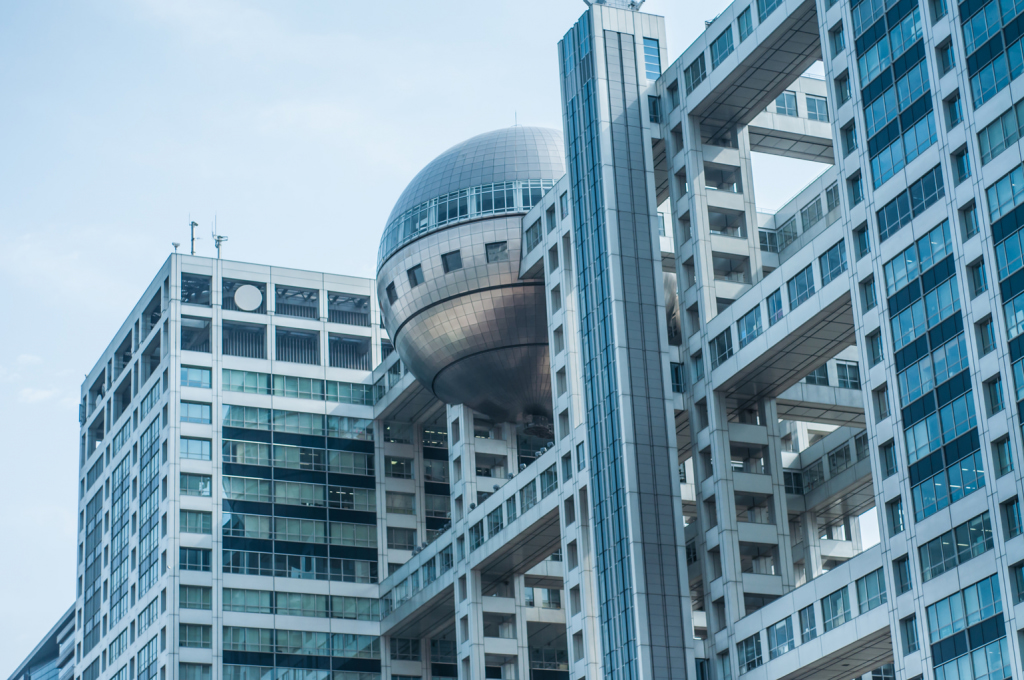Tokyo’s Nakagin Capsule Tower was the stuff of dreams. Dreamed up by architect Kisho Kurokawa, it was one of the finest examples of Metabolist architecture. Envisioned as a structure in flux, its individual apartments were capsules stacked on a vertical axis that could in theory be moved around and replaced. The dream of many was to visit it and enter inside — not an easy feat since all apartments were privately owned. Finally, the dream was to preserve Nakagin from demolition as it started falling into disrepair in the last two decades. And in 2022 everyone who loved Nakagin Tower had to let go of the dream and witness its disassembly and disappearance.
In a way, death is the destiny of any life and Metabolist architecture saw buildings as living organisms in a living city. Some capsules will be preserved and exhibited in museums.
While nothing can replace Nakagin Tower, Tokyo is still home to extraordinary buildings by Metabolist architects or buildings with similar aesthetics from that time.
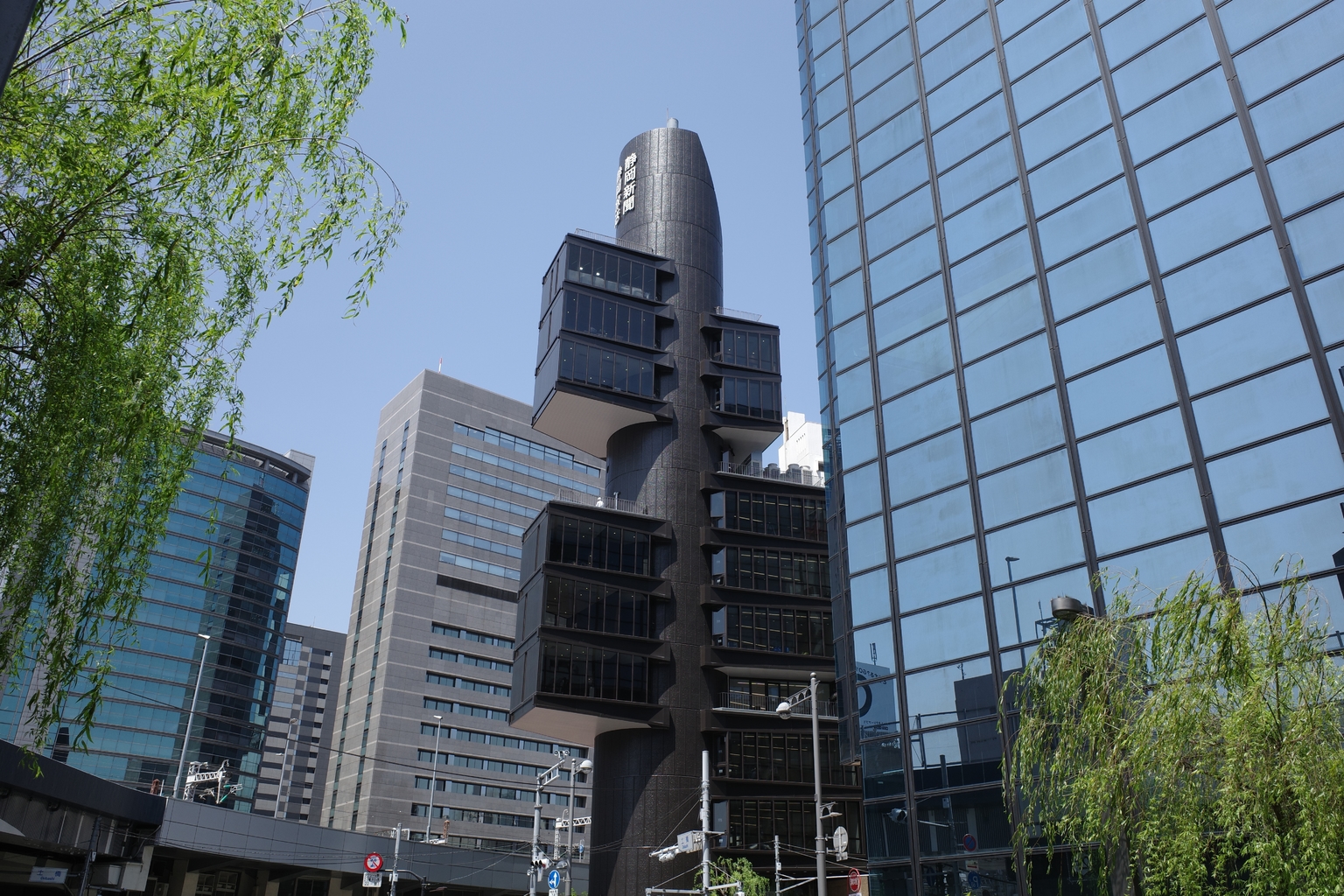
Editorial credit: image_vulture / Shutterstock.com
Shizuoka Press and Broadcasting Center by Kenzo Tange
Walking distance from Nakagin Tower, the Shizuoka Press and Broadcasting Center is its older senpai. Built in 1967, five years before Nakagin, this building was the first spatial realization of Tange’s Metabolist ideas he was working on since the 1950s. It’s a narrow building with one central core, an axis into which prefabricated capsules or offices can be attached and detached as needed. This would allow the building to constantly evolve and change, but just like Nakagin, it’s stayed the same to this day.
You can reach the Shizuoka building easily from Shimbashi Station. It’s also often visible from the train lines passing through Shimbashi.
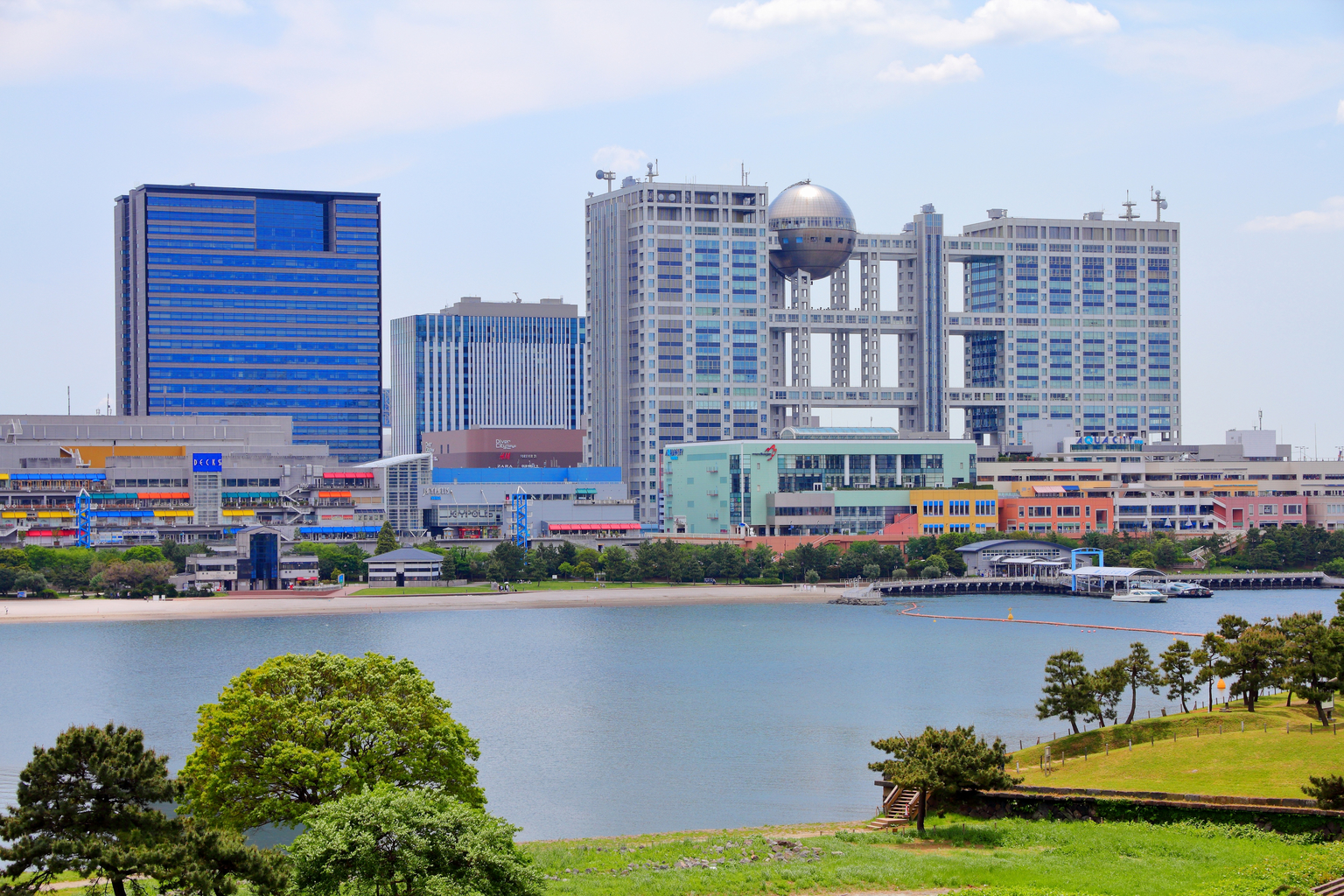
Editorial credit: Tupungato / Shutterstock.com
Fuji Television Building by Kenzo Tange
This is Japan’s largest building for a broadcasting station and one of the most uniquely recognizable buildings in the country.
One of the newest buildings on this list, the Fuji TV building was completed in 1996. It was designed by Japan’s pioneering and leading Metabolist Kenzo Tange and Tange Associates so it still retains elements of the movement for organic architecture. The titanium bridges and rows of neat windows are similar to Tange’s Tokyo Metropolitan Government building, while the spherical observatory in the center is an organic shape closer to the design of Nakagin Tower and its porthole windows.
The sphere called the Hachitama Spherical Observation Room is open to the public for a fee and it offers one of the best views of Tokyo and even Mount Fuji on a clear day. On some selected occasions, the building lights up at night with special colors and designs.
Fuji TV is in Odaiba, reachable via Tokyo Teleport Station or Daiba Station.
Wacoal Kojimachi Building by Kisho Kurokawa
Kisho Kurokawa’s boldest building remains Nakagin, alongside his designs for the Osaka Expo 1970. The organic architecture principles, however, remain in his other creations, such as the flowing wavy shape of the National Art Center Tokyo in Roppongi built in 2007.
Often overlooked, his Wacoal Kojimachi Building is actually closer in style and age to Nakagin Tower. It was completed in 1984 and it uses quirky circles and oblong shapes to create quite a unique structure. Most of the character is on the top of the building, so if you don’t look up it’s easy to pass without noticing it.
The building is the Tokyo headquarters of the fashion lingerie company Wacoal so it’s aiming to channel haute couture in its design. It’s also full of futuristic elements such as the UFO-inspired entrance, as well as symbols of astronomy and astrology inside.
Wacoal Building is close to the Imperial Palace and can be reached via Kojimachi, Hanzomon or Yotsuya stations.
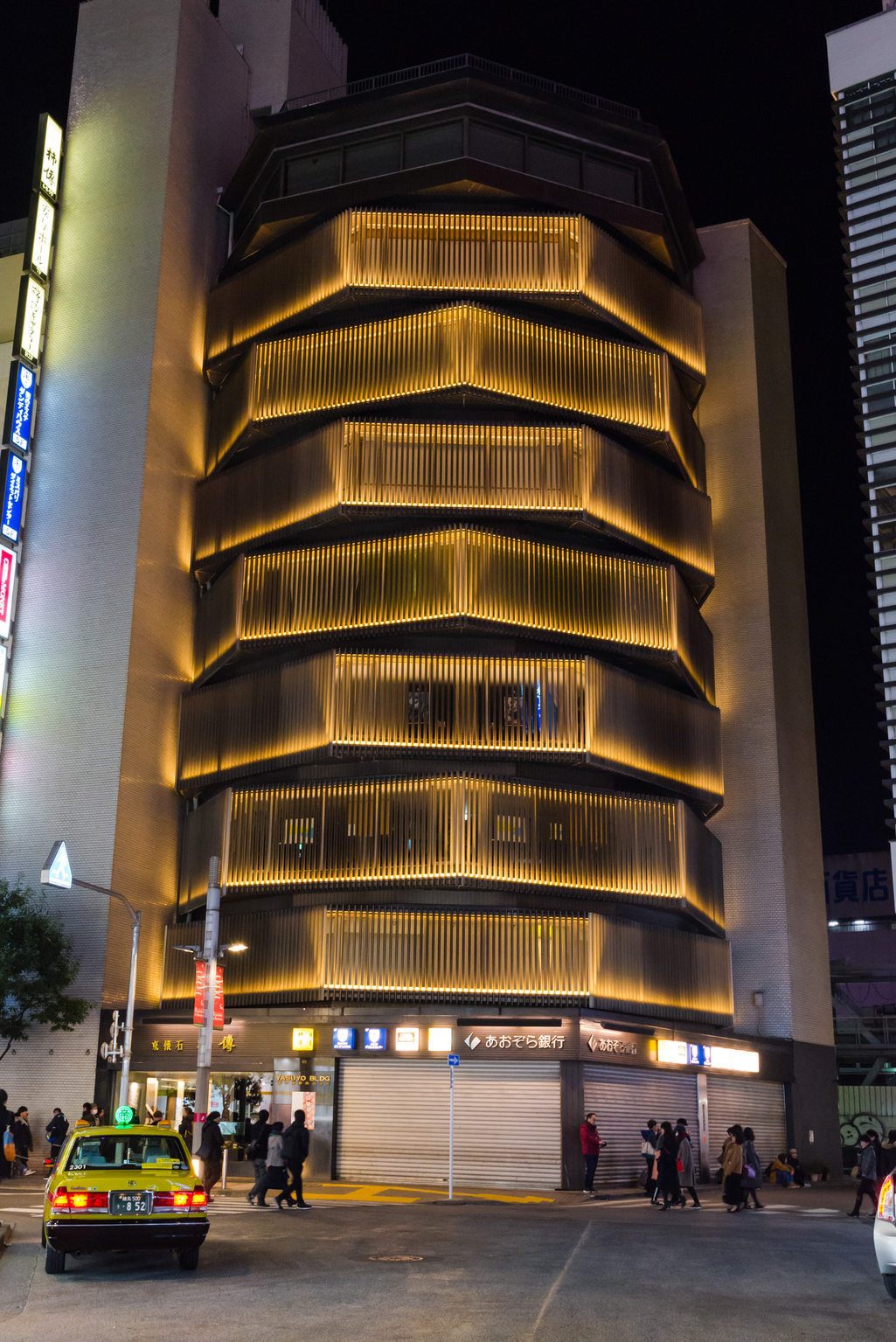
Editorial credit: PhakornS / Shutterstock.com
Yasuyo Building by Nobumichi Akashi
This modern-looking building in Shinjuku is surprisingly three years older than Nakagin. It was built in 1969 and is still in excellent condition. Similar to the stacked look of Nakagin, the Yasuyo Building is shaped like stacked bolts or gears. The metallic shine adds to the overall impression. When lit up at night, it’s an eye-catching elegant building in the advertisement-riddled Shinjuku.
The building houses commercial facilities, the most well-known being the Kakiden restaurant that occupies floors six to nine. So, if you want to peek inside, visiting the restaurant is the best way to go.
Despite the building’s excellent condition, there is talk of its potential demolition. This is due to the nature of Shinjuku, an area in constant flux and rebuilding.
The building is best accessed via the east exit of Shinjuku Station.
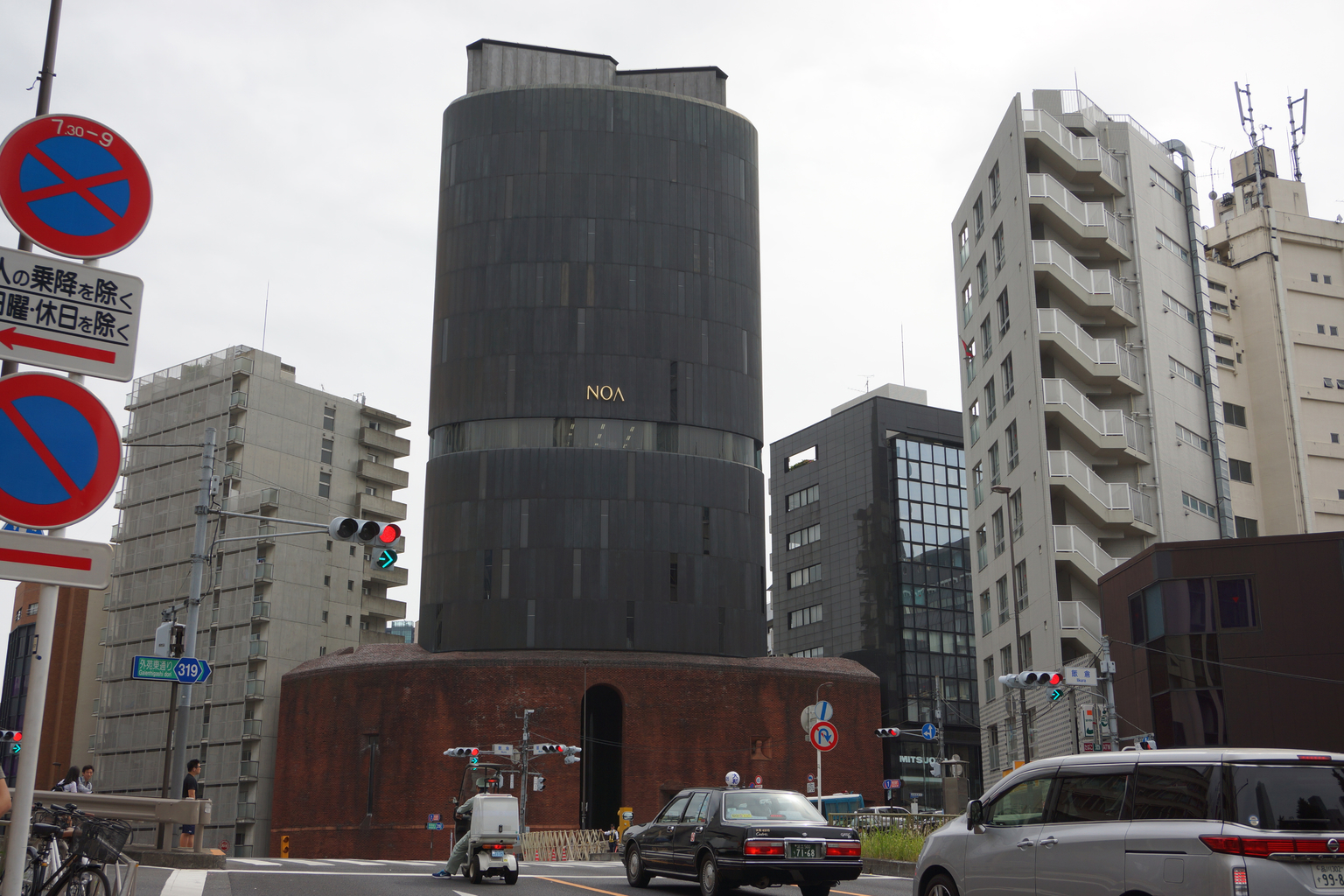
Editorial credit: Lee Jung Tak / Shutterstock.com
Noa Building by Seiichi Shirai
This building has been grabbing the attention and imagination of passersby for more than half a century. Built two years after Nakagin Tower, in 1974, the Noa Building is just a few steps away from Tokyo Tower. One of the most baffling-looking buildings in Tokyo, the cylindrical almost-windowless structure rises from a redbrick base. Its materials suggest an industrial structure, not unlike a silo or a factory, but it is in fact a corporate office building.
The designer of the building, Seiichi Shirai, studied architecture in pre-war Berlin and uses a lot of German architectural elements, hence the redbrick base.
Takenaka Corporation, the company that built the Noa Building after Shirai’s design, is also behind another peculiar structure at the same intersection as Noa Building. The Reiyukai Shakaden Temple, built one year after Noa in 1975, is also worth visiting. Influenced by Shirai’s bizarre ideas, the internet has unofficially dubbed it “Spaceship Temple.”
Featured image by Tatsu_Photographer via Shutterstock.com.

